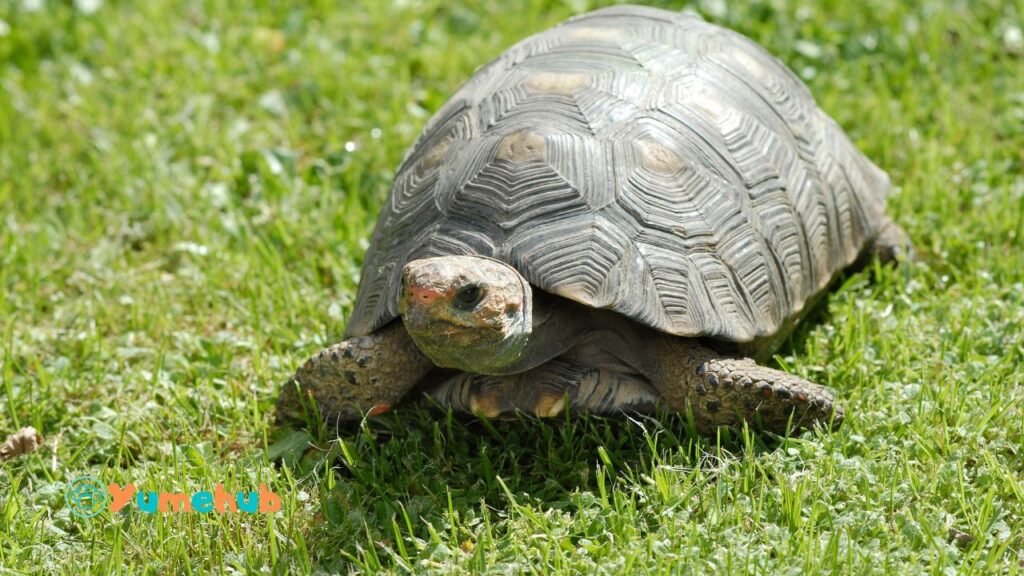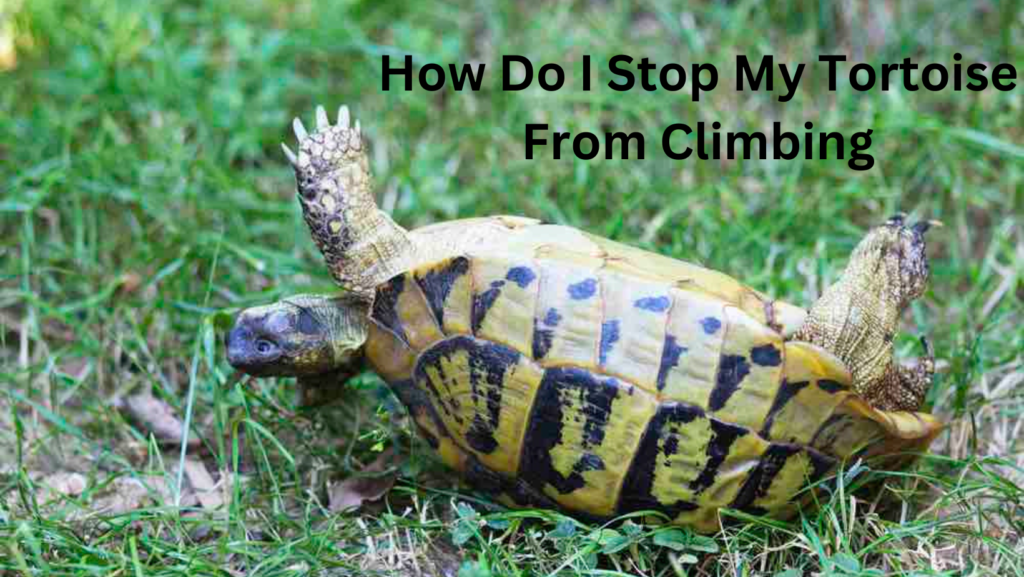My tortoise, Timmy, is always trying to climb the walls. I don’t know why he does it, but every time I see him, he’s halfway up the wall, scrabbling at the paint with his little claws. It’s really quite amusing, although I worry that he might hurt himself if he falls.
I’ve tried to deter him from climbing the walls by putting obstacles in his way, but he just seems to find a way around them. I’ve even tried putting a mirror on the wall, thinking that he might think he’s seeing another tortoise and be discouraged, but he just seems to think it’s a game.

At this point, I’ve pretty much given up on trying to stop Timmy from climbing the walls. I just make sure to keep an eye on him and be there to catch him if he falls. After all, it’s just his little quirk and it doesn’t really bother me that much.
Why Does My Tortoise Keep Trying to Escape?
There are a few reasons why your tortoise may be trying to escape. One possibility is that it is not getting enough food or water and is trying to find a better source. Another possibility is that it is not getting enough sunlight and is trying to find a place where it can bask in the sun. Finally, it is possible that your tortoise is simply bored and is looking for something new to do.
Whatever the reason, it is important to try to figure out why your tortoise is trying to escape and to address the problem. Otherwise, it is likely that your tortoise will keep trying to escape and may eventually succeed.

Is Your Tortoise Enclosure Too Small?
If your tortoise enclosure is too small, your tortoise will not have enough room to exercise and explore. A small enclosure will also limit the number of hiding places and basking spots your tortoise has access to. This can lead to stress and health problems for your tortoise.
If you think your tortoise enclosure might be too small, consider upgrading to a larger one.
Is Your Tortoise Enclosure Made of Glass?
If your tortoise enclosure is made of glass, you may be inadvertently putting your pet at risk. Glass can shatter if it is hit with enough force, and if your tortoise is inside the enclosure at the time, he or she could be seriously injured or even killed.
In addition, glass does not provide the same level of insulation as other materials, so your tortoise could become too cold or too hot if the enclosure is not properly temperature-controlled. If you have a glass tortoise enclosure, be sure to check it regularly for cracks or damage, and consider replacing it with a more durable material such as Plexiglas or polycarbonate.
Is Your Tortoise Enclosure A New Environment?
If so, your tortoise may be experiencing a bit of culture shock. It’s not uncommon for tortoises to go through a period of adjustment when they’re first introduced to a new enclosure. They may become withdrawn or lethargic and may stop eating.
There are a few things you can do to help your tortoise acclimate to its new home.
- First, make sure the enclosure is as close to its natural habitat as possible. This means providing plenty of space for them to roam, along with hiding places and a warm basking area.
- Second, try to handle your tortoise as little as possible for the first few days. Let them explore their new home at their own pace and get used to their new surroundings.

With a little time and patience, your tortoise will eventually settle into its new home and start to enjoy its new environment.
Is It Mating Season for Tortoises
Mating season for tortoises usually occurs during the spring and summer months. During this time, male tortoises will try to find a mate by looking for receptive females. If a male tortoise finds a female that he is interested in, he will approach her and attempt to mate. If the female is not interested, she will usually walk away.
However, if the female is receptive, she will allow the male to mount her and they will mate. After mating has occurred, the female will lay her eggs in a nest that she has dug. Once the eggs have been laid, the male and female will usually go their separate ways.
Tortoise Breeds That Love To Climb
There are a few tortoise breeds that love to climb, such as the Russian tortoise, the spur-thighed tortoise, and the Leopard tortoise. These tortoises are known for their adventurous nature, and they love to explore their surroundings.
When it comes to climbing, these tortoises are experts! They can climb trees, rocks, and even walls. If you have a tortoise that loves to climb, be sure to provide them with plenty of opportunities to explore and exercise its climbing skills.

Do Tortoises Climb Walls?
There is no definitive answer to this question. While some tortoises may be able to climb walls, others may not have the ability to do so. It likely depends on the size, strength, and claws of the individual tortoise.
Some tortoises may be able to climb smooth walls, while others may be able to climb rougher surfaces. Ultimately, it is up to the individual tortoise and what it is physically capable of.
How Do I Stop My Tortoise From Climbing?
If you’re finding that your tortoise is starting to climb a lot, there are a few things you can do to help discourage this behavior. First, make sure that their enclosure is not too tall – tortoises can climb high, so if their enclosure is too tall they may be encouraged to try and climb out.

Second, try providing them with some low-lying plants or other objects to climb on inside their enclosure – this can give them something to do that isn’t trying to escape. Finally, if you think your tortoise is climbing out of boredom, try to provide them with more enrichment in their enclosure, such as toys, hiding places, and other forms of stimulation.
Conclusion
Understanding the reasons behind your tortoise’s escape attempts is the first step in addressing the behavior and enhancing its quality of life. By recognizing that these actions may stem from natural instincts, curiosity, or environmental stressors, you can take proactive measures to create a safer and more fulfilling habitat.
Consider evaluating the enclosure’s size, security, and overall environment, ensuring it meets your tortoise’s physical and psychological needs. Incorporating enriching activities and providing appropriate social interaction can also help mitigate the urge to wander.
Ultimately, fostering a suitable home for your tortoise not only keeps it secure but also promotes its well-being, allowing you both to enjoy an enriching bond. With a little attention and care, your tortoise can thrive in its environment, leaving your escape concerns behind!

